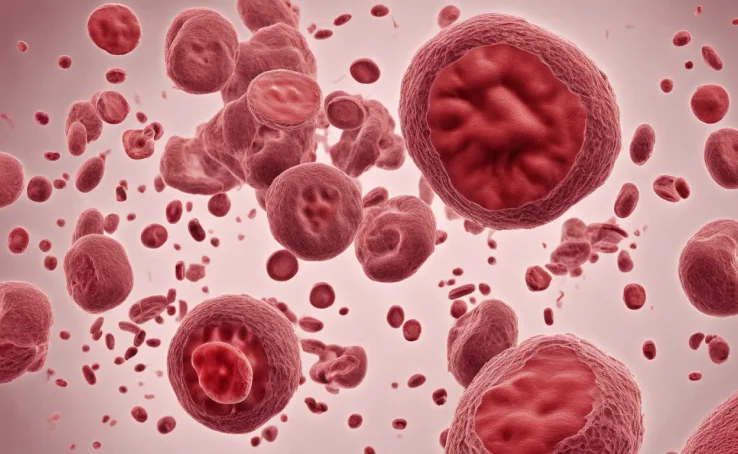Avg Price:


Treatment Time
Recovery Time
Hospitalization Days
Success Rate
Acquired Alastic Anemia is an uncommon and serious Disorder causing Bone Marrow Failure, affecting individuals of all age groups. It happens when the immune system starts destroying the bodys own blood-forming cells and represents a well-established form of bone marrow failure.
The incidence of aplastic anemia is 2-3 times higher in Asia compared to the Western regions. Studies suggest an incidence ranging from 0.6 to 6.1 cases per million population worldwide. Aplastic anemia can develop in people of all ages but is most commonly observed in adolescents, young adults, and the elderly. There is a small peak in childhood and a second peak in the 20 to 25-year-old age group. It affects men and women equally when they get exposed to the same risk factors causing aplastic anemia.
Diagnosing aplastic anemia requires a comprehensive approach, involving a prompt evaluation for inherited and secondary causes of bone marrow aplasia, along with providing aggressive supportive care. For severe aplastic anemia in newly diagnosed pediatric patients and younger adults with a matched sibling donor, bone marrow transplant is recommended. In older adult patients and those without a matched sibling donor, frontline therapy involves immunosuppressive therapy (IST) using horse antithymocyte globulin and cyclosporine A. The selection of frontline therapy depends on various factors, including the severity of disorder, the patient's age, donor availability for bone marrow transplant, and access to optimal therapies.
Recent advancements in upfront therapy may provide promising outcomes with closely matched unrelated donor transplants in younger patients and the potential benefits of combining drugs like eltrombopag (a class of medications called thrombopoietin receptor agonists) with initial IST. In the cases which do not respond adequately to standard treatment and therapies, various other therapeutic options also exist that can potentially improve outcomes even with matched unrelated donors and in haploidentical bone marrow transplantation.
India is becoming a premier destination in offering advanced, fully equipped hematology care facilities. The country is home to state-of-the-art therapeutic care facilities and a large pool of highly skilled and experienced hematologists who can effectively treat a variety of blood disorders like aplastic anemia with a high success rate.Therefore, choosing the best doctors for aplastic anemia treatment and the best hospitals for aplastic anemia treatment in India is getting convenient every day.
Aplastic Anemia is a condition where the bone marrow fails to synthesize an adequate number of new blood cells, leaving individuals fatigued and susceptible to infections and uncontrollable bleeding. This rare and severe ailment can manifest at any age, either suddenly or gradually worsening over time, and its severity can range from mild to profound. Treatment approaches for aplastic anemia may encompass medications, blood transfusions, or bone marrow transplant.
Various diseases and conditions have the potential to cause aplastic anemia by destroying the blood forming cells in the bone marrow, resulting in reduced production of red blood cells, white blood cells, and platelets. In some instances, aplastic anemia can be inherited. This condition heightens the risk of complications such as bleeding, leukemia, or other severe blood disorders. Without proper intervention, aplastic anemia can lead to serious medical issues, including irregular heartbeat and heart failure. If diagnosed with aplastic anemia, seeking medical attention at the first sign of infection, such as a fever, is crucial to prevent complications that could become life-threatening.
Take Charge of Your Health
Book a Free Consultation

Your doctor may advise you following diagnostic tests after assessing your medical history, symptoms, and overall health status in order to confirm aplastic anemia and proceed for the accurate treatment afterwards:
Your Health is Our Priority
Book a Free Consultation
If your doctors selects blood transfusion as your treatment plan for aplastic anemia then you may expect following:
If your doctors selects bone marrow transplant as your treatment plan for aplastic anemia then you may expect following:
The majority of patients experience no adverse effects from blood transfusions. However, a few patients might encounter:
Complications after bone marrow transplant may be acute (occurring within 90 days) or chronic (long-standing). These are as follows:

The transplantation process necessitates an extended hospital stay. Following the transplant, medications are administered to mitigate the risk of rejection of the donated stem cells. Blood tests and other tests will be performed in the days and weeks following your bone marrow transplant to check your condition. You may require medication to treat problems such as nausea and diarrhea.
There will be close medical supervision of you following your bone marrow transplant. You may need to stay in the hospital for several days or longer if you have infections or other issues. You may also require red blood cell and platelet transfusions until your bone marrow produces enough of those cells on its own.
Avail the Expert Health Advice
Book a Free Consultation
For months to years following your transplant, you may be more susceptible to infections or other problems. You must see your doctor frequently for the rest of your life to monitor for late complications.
While not a cure, blood transfusions can effectively manage bleeding and alleviate symptoms by supplying the blood cells that the bone marrow fails to produce.
The long-term overall survival rate after bone marrow transplant in children suffering from aplastic anemia is over 90%. Recent research findings indicate survival rates falling within the range of 70% to 90% even for adults. Additionally, a more recent study encompassing both pediatric and adult patients, with a follow-up period of 4 years, also demonstrated a 100% survival rate. For individuals aged over 50, the utilization of reduced-dose cyclophosphamide (CY) along with fludarabine (FLU) as part of the conditioning regimen has resulted in enhanced survival outcomes and reduced risk of transplant-related mortality.
The cost of Aplastic Anaemia Treatment in India varies according to various factors which are discussed in the next section of this article. However, the approximate cost of the procedure may range from AAAAAA—ZZZZZZ.
| Location | Minimum Cost ($) | Average Cost ($) | Maximum Cost ($) |
| Delhi | |||
| Mumbai | |||
| Chennai | |||
| Hyderabad |
| Location | Minimum Cost ($) | Average Cost ($) | Maximum Cost ($) |
| UK | |||
| USA | |||
| Turkey | |||
| Singapore |
Following are the factors affecting the cost of Aplastic Anemia treatment in India:
An approximate cost of diagnostics for Aplastic Anemia treatment:
| Diagnostic Procedure | Average Cost (₹) |
At Medflick, we envision a world in which there are no barriers to communication and everyone has easy access to the best medical care. We aim to widen access to healthcare around the world by leading the way in delivering holistic medical care with high standards of Medical Value Travel (MVT).
We provide you a comprehensive healthcare platform that forms a bridge between patients and leading medical facilities globally. We facilitate our patients in accessing the best healthcare services by coordinating every aspect of their journey. Medflick helps you with everything from scheduling appointments, getting second opinions, treatment plans, visa letters including concierge services to ensure a smooth and successful return journey.
Fostering expertise backed by commitment, resilience and years of experience, we connect you to a wide network of India's best doctors
Explore the most advanced, reputable and trusted hospitals in India, offering the highest levels of clinical and surgical excellence

The worlds most trusted personalized health community with more than 1,00, 000 members that share their journey, experiences and health insights. Join your community and get access to make informed health decisions.
Explore



